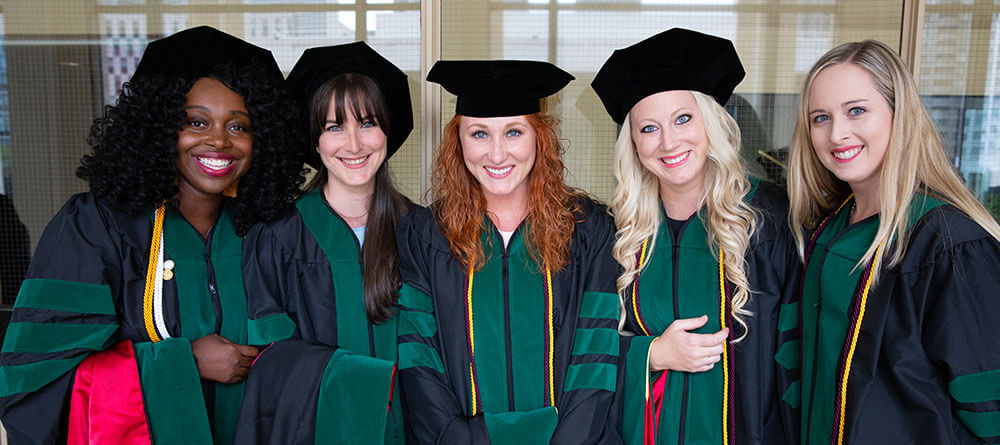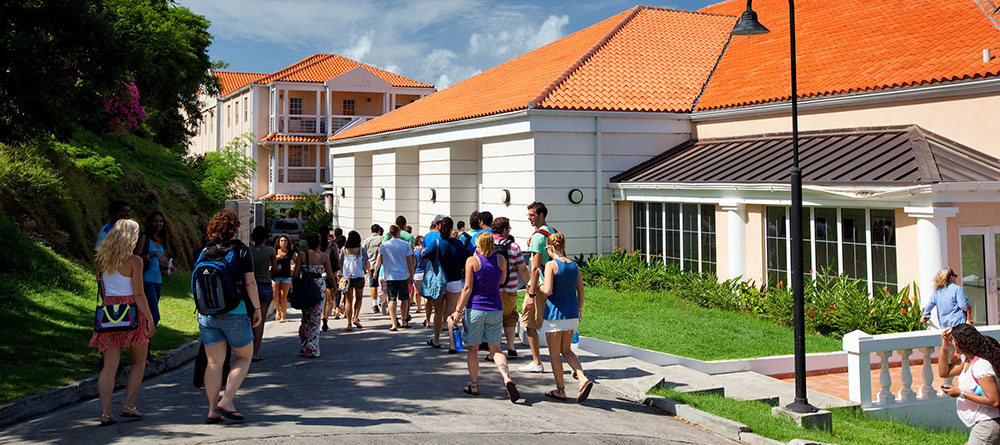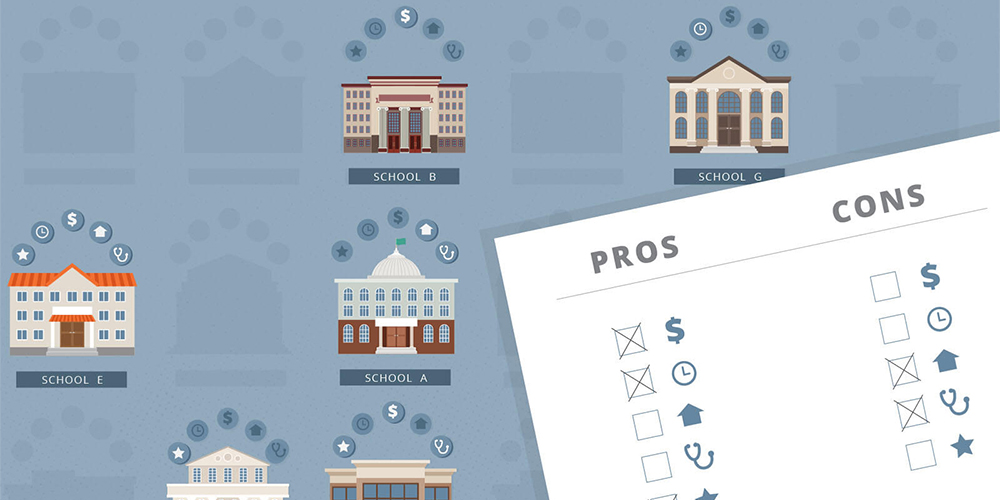Now that you’re committed to going to medical school, finances are on your mind more than ever. Earning a Doctor of Medicine (MD) degree is a significant investment, which is why many may be tempted to only consider the cheapest medical schools.
But before you make a decision based solely on medical school tuition, you should know there’s much more to consider. There are many criteria you should evaluate for each MD program you’re considering. Furthermore, a program’s expenses might not be what you’d expect due to a number of factors.
Join us as we explore the various factors you should be aware of when considering the cost of medical school.
Considering the cheapest medical schools? Remember these 5 things
As you start comparing programs, it’s natural to think about medical school tuition. But before you get wrapped up in the numbers, make sure you’re looking at the bigger picture.
Read on to find out what else should be in the back of your mind if you’re hoping to find cheap medical schools.

1. Fixating on cost ignores quality
Medical school is expensive, but so are many of the other major purchases you’ll make throughout your life. When you think of buying a car or a house, cost is only one factor you consider. Why should an MD degree be any different?
Remaining hyper-focused on the price could result in overlooking some of the most important selection criteria for choosing a medical school. Significant elements to evaluate in addition to an MD program’s tuition include the student support services the school provides, its graduate success rate, the esteem of its faculty, and the quality of its facilities.
Remember that medical school is just the first step in your journey toward becoming a physician. Obtaining an MD doesn’t mean much if you’re unable to secure a postgraduate training position or pass the required licensing exams.
You can get a solid idea of how different medical schools equip their students by investigating the residency placement rate and the United States Medical Licensing Exam (USMLE) Step 1 pass rate for each program you’re considering.
2. Tuition can vary depending on where you live
If you’ve done any research on the cheapest medical schools, you’ve probably encountered some tuition costs that seem too good to be true. And in most cases, it’s wise to be skeptical. It’s also important to keep in mind that there are some external factors to account for.
For example, many online lists focus on in-state tuition, which doesn’t apply to out-of-state students. Data from the Association of American Medical Colleges (AAMC) indicates those two numbers can be significantly different for some schools.
Though attending an in-state school seems like an easy fix, a majority of medical students attend school away from home. According to the AAMC, more than 77 percent of US students who started medical school in the 2021–2022 school year went out of state for their education.
Finally, it’s worth noting that applying to too few schools is one of the biggest mistakes applicants make. It often results in failing to gain acceptance to medical school.

3. Certain costs have nothing to do with tuition
The cost difference between attending one program over another is often less substantial than it first seems. Some expenses are unavoidable, regardless of which institution you choose. Medical students need a fair number of supplies.
“You must buy books, instruments such as a stethoscope, and more,” explains Dr. Kim Langdon, retired OB/GYN.
Cost of living is another factor you should consider. Housing is simply more expensive in certain areas. You might end up saving on tuition by attending a certain school but pay significantly more for rent. Housing costs can even vary within a city.
“Keep in mind that living near campus and the hospital is more expensive than other places in most communities,” Dr. Langdon points out. With so many variables, it’s easy to see that these unrelated costs must also be considered.
4. Medical school is a serious, long-term investment
Obtaining a medical education builds a foundation that will stick with you for the rest of your life. If you’re considering the cheapest medical schools, make sure you’re truly committed to a career as a physician.
Those seriously questioning the cost or time commitment up front might want to look into other options. “I tell those people to consider becoming a physician assistant or nurse practitioner instead,” Dr. Langdon says.
But if you know you’re destined for a career in medicine, keep in mind that you have plenty of time to tackle cost. Some medical school graduates even postpone loan payments through deferment or forbearance until after they’ve completed residency. Either way, paying for medical school is a long-term strategy.
5. Some institutions offer students more than others
You’ve probably heard countless people say, “You get what you pay for.” This is truer than ever when it comes to medical school. Some programs have slightly higher tuition rates due to taking extra measures that ensure student success.
St. George’s University (SGU), for example, offers a robust array of support services for students. Every week, the Department of Educational Services (DES) runs hundreds of workshops that focus on everything from specific subjects to more general skills like time management.
SGU also has a track record of graduate success due to its commitment to preparing medical students for residency with hands-on clinical training from the very start of their time in the MD program. As such, SGU boasts a 93 percent US residency placement rate for eligible graduates over the past three years.1
Invest in your future as a physician
While it’s understandable that you want to keep your financial burden to a minimum, limiting yourself to the cheapest medical schools could be a mistake. Medical education is incredibly demanding. It’s important to attend an institution that’s fully equipped to help you succeed, and that might not always line up with the lowest tuition rates.
Keep an open mind as you compare medical schools to make sure you’re aware of all the programs that could be right for you. If you’re curious about what St. George’s University has to offer, check out our infographic “Is SGU Medical School Worth It?”
1 Average of 2020, 2021, 2022 residency placement rate. Residency placement rate is defined as the total number of students who obtained a US residency divided by the total number of students who applied to a US residency program in a given year as of May 2022.
* This article has been updated from a previous version to include current facts and figures.

